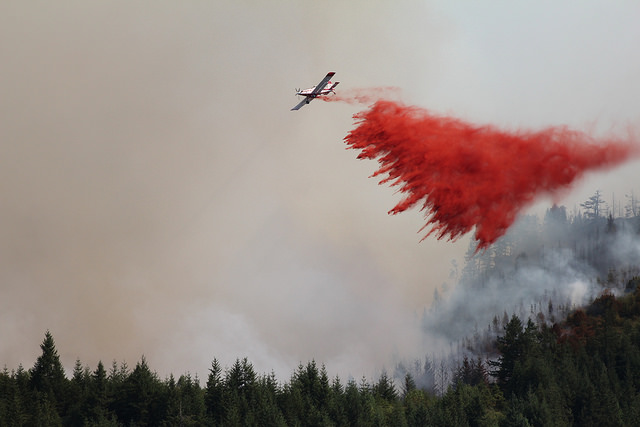This article was originally published in the Wall Street Journal.
With more than five million acres already burned or burning, 2022 is shaping up to be another devastating year for wildfires in the U.S. America’s forests need to be managed more actively, a task the Biden administration took up earlier this year when it announced a 10-year strategy to reduce excess fire fuels, like downed trees and underbrush, on up to 20 million acres of national forest and 30 million acres of other land. This plan is a step in the right direction, but it’s unlikely to come to fruition if the administration doesn’t first tackle two major obstacles to forest restoration: environmental red tape and litigation.
Projects to clear out fire fuel often face substantial delays. New research from the think tank where I work, the Property and Environment Research Center, found that it takes an average of 3.6 years for efforts to clear downed, unhealthy and too densely grown trees to move from the required environmental review to on-the-ground work. For prescribed burns, the delay is even longer, 4.7 years. And these are the averages. Many urgently needed projects take much longer.
While many bureaucratic, technical and fiscal obstacles affect these delays, red tape and lawsuits are substantial contributors. Fuel-reduction projects are more likely to require an environmental impact statement, the most extensive level of review under the National Environmental Policy Act, than other projects that are covered under NEPA. The process exhaustively analyzes a project’s environmental impact and requires that potential impact be compared with many other hypothetical projects. It can take more five years to complete.
NEPA is intended to serve the laudable purpose of informing decisions, but when delay comes at significant environmental cost, requiring something as rigorous as an environmental impact statement is counterproductive. Last year almost 10,000 acres of northern spotted owl habitat in Northern California’s Klamath National Forest went up in smoke in the Antelope Fire. The Forest Service was well aware that the area was at risk of a wildfire and had a plan to protect it, but the project was tied up for about a decade by environmental reviews and objections from environmental activists who, ironically, were concerned about the owls’ well-being. These sorts of yearslong delays are becoming all too common.
Add litigation to the mix and things can really go sideways. The Forest Service is risk-averse. Surveys of agency personnel have found that the mere threat of a lawsuit can lead the agency to step back and waste precious time trying to “litigation proof” a project. Fears of litigation for projects requiring an environmental impact statement—the complexity of which open up plans to more lawsuits—can tack on an additional two years before they can actually be implemented. According to Drew Stroberg, a district ranger in the Klamath National Forest, the Forest Service’s project to reduce wildfire risk in the owl habitat was delayed in part because the agency wanted to avoid any possible lawsuit. After fire consumed the area last year, he observed that the resources and copious reports generated in that effort “might as well be in the trash can.”
The same might be said of the Biden plan if it doesn’t reduce red tape and lawsuit risk. How can the Forest Service meet its ambitious 10-year goal if almost all of that time gets lost in the review and planning of its initial projects?
A good start would be streamlining the environmental-review process for forest management. Other major projects already get less scrutiny under NEPA than fire-fuel reduction. These endeavors receive a categorical exclusion, which allows them to skip the rigors of an environmental impact statement and instead receive more moderate analysis, which on average takes around three years. That’s still plenty of time to determine whether a forest-management project presents undue risk, but such an approach could let the Forest Service prevent the sort of destruction seen in Klamath National Forest. Requiring a less complex report would also lower the Forest Service’s risks of litigation, saving additional time. With each wildfire season bringing new calamities, every year counts.
The only way to tackle our wildfire crisis meaningfully is through better active forest management, as the Biden administration has proposed. But if the risks of litigation and overly cumbersome regulation aren’t removed, that plan is likely to go up in smoke.




